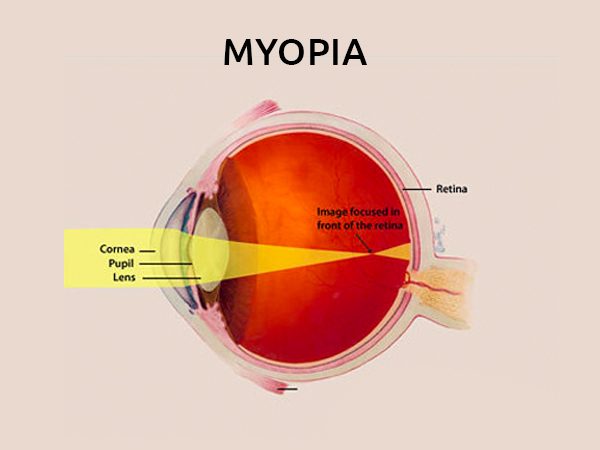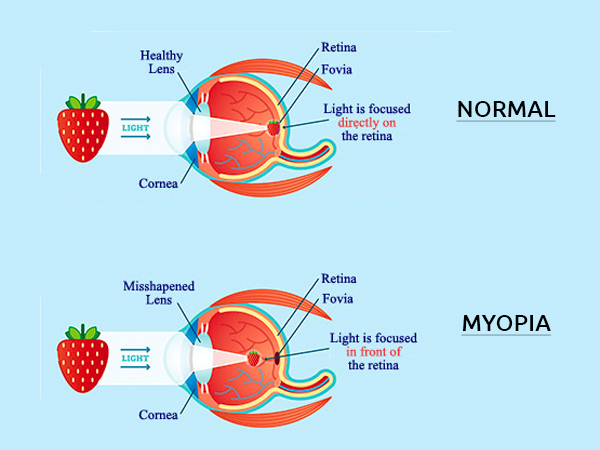Just In
- 2 hrs ago

- 3 hrs ago

- 7 hrs ago

- 8 hrs ago

Don't Miss
- Finance
 IRCON, RITES: 2 Multibagger Navratna Railway Stocks Potential To 17-24% Upside Ahead; Assigned BUY Rating
IRCON, RITES: 2 Multibagger Navratna Railway Stocks Potential To 17-24% Upside Ahead; Assigned BUY Rating - Movies
 Shraddha Kapoor Channels Inner Saleswoman, Sells Jewelry Worth Rs 11K In First Attempt- VIRAL VIDEO
Shraddha Kapoor Channels Inner Saleswoman, Sells Jewelry Worth Rs 11K In First Attempt- VIRAL VIDEO - Sports
 On This Day in IPL: CSK Played their First Match at Chepauk, Dhoni scored first 20th Over Six
On This Day in IPL: CSK Played their First Match at Chepauk, Dhoni scored first 20th Over Six - News
 Goa's Railway Renaissance: BJP's Vision Transforms Connectivity
Goa's Railway Renaissance: BJP's Vision Transforms Connectivity - Education
 Meet Naima Khatoon, First Vice Chancellor of AMU, Know Her Background and Education Qualification
Meet Naima Khatoon, First Vice Chancellor of AMU, Know Her Background and Education Qualification - Technology
 Xiaomi Robot Vacuum Cleaner S10, Handheld Garment Steamer, and Redmi Buds 5A Launched in India
Xiaomi Robot Vacuum Cleaner S10, Handheld Garment Steamer, and Redmi Buds 5A Launched in India - Automobiles
 Nissan Magnite Achieves 1 Lakh Unit Sales Milestone: Consistency Helps
Nissan Magnite Achieves 1 Lakh Unit Sales Milestone: Consistency Helps - Travel
Kurnool's Hidden Gems: A Guide To Exploring India's Lesser-Known Treasures
Exclusive: Doctor Shares How Parents Can Reduce Screen Time For Kids to Counter Myopia Risk
Lifestyle choices are one of the primary factors that can affect your child's visual health. It goes beyond doubt that the increase in the usage of the digital devices have impacted children in a large way. Staring at the screen of the mobile phones, tablets and even television for prolonged hours can have a negative impact on the eyes of your kids and if goes untreated might eventually expose them to the risk of myopia, commonly known as nearsightedness.
This is the primary reason why doctors are noticing an upsurge in myopia cases in children at a very young age, where children complain of blurred vision, squint or strained eyes.

In an exclusive conversation with OneIndia Boldsky, Dr. Vidhya. C, Consultant, Paediatric Ophthalmology and Strabismus Dept, Sankara Eye Hospitals, Bangalore shares with us how parents should chip in to reduce the screen time for kids to cut down the Myopia risk.
To understand the impact of Myopia on children's visual health, first we need to understand what this medical condition is all about.
What Is Myopia?
Myopia
is
a
common
vision
condition
in
which
a
person
can
see
close
objects
clearly,
but
the
objects
that
are
farther
away
appear
blurred.
This
causes
symptoms
like
blurry
vision
when
looking
at
distant
objects,
squinting
of
the
eyes,
and
headaches
caused
by
eye
strain.
According
to
the
World
Health
Organisation
(WHO),
myopia
and
high
myopia
will
affect
52%
(4949
million)
and
10.0%
(925
milion),
respectively,
of
the
world's
population
by
2050.
What Causes Myopia In Children?
Dr. Vidhya says that, "the causes of myopia in children are the generation gap that is one of the main reasons for the rise of myopia in kids. Earlier, the usage of gadgets were lower as compared to nowadays generation".
"Certain lifestyle changes like children staying indoors and parents give their children smartphones just to control them and make them sit in one place. This leads to changes in behavior, social character and children become more introvert".
She further adds, "at least 70% of children have a risk of developing myopia because pre-school children spend most of their time on gadgets . Especially, 3-year-old children, have -4, -5, -6 eye power which is actually bad and increases with the growth of children. There is a misconception among parents that television is harmful than gadgets, but it's actually the near vision gadgets that are deemed more harmful".
Reading too closely and the lack of time spent outdoors playing increase the progression of developing myopia, she says.
Here's how two responsible parents are saving their children's eyes from the Myopia risk-
A
teacher
at
St.
Agnes
School
in
Kharagpur,
Swagata
Patra
Kar
(32)
shared
with
OneIndia
Boldsky,
how
like
most
kids
these
days
her
child,
Ritayan,
was
also
addicted
to
mobile
phones.
"My
6-y
ear-old
son
was
really
addicted
to
TV
and
smartphones
and
that
was
a
huge
concern
for
us
as
a
parent.
Even
though
we
filtered
the
content
for
him,
we
had
to
almost
drag
him
away
from
the
devices
so
that
he
doesn't
damage
his
eyes.
Due
to
this,
he
was
losing
interest
in
his
studies
and
had
concentration
issues
as
well.
As
a
parent,
it
is
our
responsibility
to
spend
quality
time
with
our
children
and
insist
them
to
play
outdoor
games," she
said.
"Giving away to the whims and fancies of children doesn't mean you love them. If you truly care about them, then choose what's best for their health," added Swagata.
Speaking
along
the
same
lines,
Satabdi
Biswas
(30)
who
works
at
TCS,
Kolkata
and
is
a
mother
of
a
3-year-old
daughter
tells
us,
"We
monitor
the
time,
Akasha
(her
daughter)
spends
on
w
atching
videos
on
mobile
phones
or
watching
TV.
I
and
my
husband
are
working,
but
we
ensure
that
we
have
enough
family
time.
She
spends
most
of
her
time
at
daycare
with
other
children
playing
outside.
We
allow
hardly
one
hour
of
screen
time
to
our
child."

What Are The Complications Of Myopia [1]
- Quality of life is reduced
- Eyestrain or squinting
- Impaired safety
- Other eye problems like glaucoma, cataracts, retinal detachment, and myopic maculopathy
If your far away distance is blurry, the quality of your vision is lowered, flashes of light in one or both eyes, consult an eye doctor immediately.
Diagnosis Of Myopia
The diagnosis of myopia is a basic eye examination, which includes a refraction assessment and an eye health examination. The doctor might use various instruments and ask you to look through several lenses to check your close distance and far distance.
Dr. Vidhya also said , "Eyeglasses help to prevent the progression of myopia and special contact lenses can be used for the treatment of myopia as well.".
Other treatment options include refracted surgery that reduces the requirement for contact lenses and eyeglasses:
- Laser-assisted in situ keratomileusis (LASIK) - The surgeon makes a thin, hinged flap into your cornea and then uses a laser to remove inner layers of your cornea to flatten the shape.
- Laser-assisted subepithelial keratectomy (LASEK) - The surgeon makes an ultra-thin flap in the cornea's outer protective cover (epithelium). After which a laser is used to reshape the cornea's outer layers, flattening its curve, and replacing the epithelium.
- Photorefractive keratectomy (PRK) - This procedure is almost similar to laser-assisted subepithelial keratectomy (LASEK). But, there is an exception the surgeon removes the epithelium and then uses the laser to reshape the cornea.
Dr. Vidhya has also shared some tips for parents and children for reducing the screen time in kids and ensuring a better quality of life:
- Eat healthy foods, include plenty of vegetables and fruits into your diet.
- Watch television from at a far distance for at least 11/2 hour, especially for children.
- Stop using gadgets for a longer period of time
- Spending time outdoors will decrease myopia risk.
- Children need to be screened before 3 years of age by a opthalmologist or pediatrician.
- [1] Holden, B. A., Wilson, D. A., Jong, M., Sankaridurg, P., Fricke, T. R., Smith, E. L., III, & Resnikoff, S. (2015). Myopia: a growing global problem with sight-threatening complications.Community eye health,28(90), 35.
-
 healthMLSI Observes Wellness Week: Organizes Myopia Awareness Program For Children In Association With Entod Pharmac
healthMLSI Observes Wellness Week: Organizes Myopia Awareness Program For Children In Association With Entod Pharmac -
 disorders cureHaving Difficulty In Seeing Distant Objects? You May Be Suffering From Myopia
disorders cureHaving Difficulty In Seeing Distant Objects? You May Be Suffering From Myopia -
 kidsIn – House Activities A Cause Of Myopia
kidsIn – House Activities A Cause Of Myopia -
 pregnancy parentingWhite Lung Syndrome: What Are The Symptoms Of The Disease Rampant In China? How Does It Spread?
pregnancy parentingWhite Lung Syndrome: What Are The Symptoms Of The Disease Rampant In China? How Does It Spread? -
 healthWorld HIV/AIDS Day: What Is The Difference Between HIV and AIDS?
healthWorld HIV/AIDS Day: What Is The Difference Between HIV and AIDS? -
 healthDengue 101: Causes, Symptoms, Risks, Complications, Treatment, Prevention, Diet And More
healthDengue 101: Causes, Symptoms, Risks, Complications, Treatment, Prevention, Diet And More -
 healthDiarrhoea 101: Causes, Symptoms, Risks, Complications, Treatment, Prevention, Diet And More
healthDiarrhoea 101: Causes, Symptoms, Risks, Complications, Treatment, Prevention, Diet And More -
 health'Epileptic Nightmare' of Neurocysticercosis: The Hidden Epidemic of Parasites Causing Epilepsy
health'Epileptic Nightmare' of Neurocysticercosis: The Hidden Epidemic of Parasites Causing Epilepsy -
 pregnancy parentingLife-Threatening Risk During Pregnancy: Sepsis Can Harm Both Mother and Baby
pregnancy parentingLife-Threatening Risk During Pregnancy: Sepsis Can Harm Both Mother and Baby -
 healthStay Informed: The Hidden Dangers of Legionnaires' Disease and How to Prevent It
healthStay Informed: The Hidden Dangers of Legionnaires' Disease and How to Prevent It -
 healthMyths vs Facts: Can A Single Mosquito Bite Really Give You Dengue?
healthMyths vs Facts: Can A Single Mosquito Bite Really Give You Dengue? -
 healthTop 5 Reasons For Vaginal Rash: When You Should See A Doctor
healthTop 5 Reasons For Vaginal Rash: When You Should See A Doctor


 Click it and Unblock the Notifications
Click it and Unblock the Notifications




